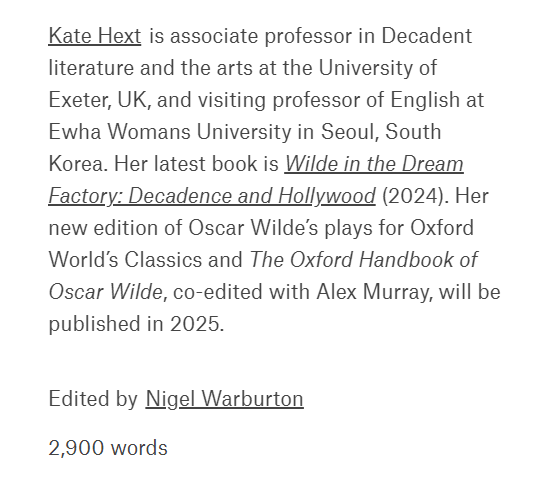All aquiver
 The Decadent movement taught that you should live your life with the greatest intensity – a dangerous and thrilling challenge
https://aeon.co/essays/the-danger-of-decadence-is-also-its-value-we-need-more-of-it
The Decadent movement taught that you should live your life with the greatest intensity – a dangerous and thrilling challenge
https://aeon.co/essays/the-danger-of-decadence-is-also-its-value-we-need-more-of-it
 The Three Brides (1892-93) by Jan Toorop. Courtesy the Kröller-Müller Museum, Netherlands
The Three Brides (1892-93) by Jan Toorop. Courtesy the Kröller-Müller Museum, Netherlands
In the middle of Oscar Wilde’s novel
The Picture of Dorian Gray (1891), Lord Henry gives Dorian a yellow book. It is a strange book: a novel without a plot, and ‘the heavy odour of incense seemed to cling about its pages and to trouble the brain.’ Captivated, he reads it in ‘a form of reverie, a malady of dreaming, that made him unconscious of the falling day and creeping shadows.’ Like its hero, and with Henry’s encouragement, Dorian enters into a lifelong pursuit of thrilling experiences. He travels the world for Roman Catholic rituals, Eastern perfumes, music from faraway tribal peoples, Renaissance tapestries, and loses himself in imagining the sins of his ancestors, whose corrupted blood runs through his veins.
 The Yellow Book, Volume 1, April 1894. Courtesy Wikipedia
The Yellow Book, Volume 1, April 1894. Courtesy WikipediaDorian exults in each new sensation until he becomes bored by it, then thrilled once more by the novelty of another sensual experience, till that too is exhausted. His pursuit of intense sensations becomes sordid and nihilistic. In his endeavour to feel everything, at the cost of all those who love him, Dorian is ultimately left with nothing. He is the quintessential Decadent, and, on its publication,
The Picture of Dorian Gray was at once hailed and derided as the epitome of the phenomenon termed ‘Decadence’.
At its most extreme, Decadence is a reckless pursuit of intense sensations: one that often teeters on the brink of scandal and sometimes topples over. When
Dorian Gray was used as evidence against its author in the decade’s most sensational trial in 1895, there was a moral backlash against the so-called ‘Decadent movement’. In recent decades, the term decadence has been appropriated as a marketing pitch to describe purchasable moments of self-indulgence – a box of chocolate truffles or a spa afternoon at a mid-price chain hotel. However, as it has become a consumer product, decadence has been shorn of its very modern questions about the place of pleasure in our lives and its potential to change our values forever, and these are worth asking.

The Decadent movement began in mid-19th-century Paris. The writers who first defined it and wore the term as a badge, were punks avant la lettre who looked back to the Roman Empire as it collapsed into a torpid, degenerate civilisation as a precedent for their own era. In
Les Fleurs du Mal (
The Flowers of Evil, 1857), Charles Baudelaire’s poetry captured the perverse pleasure of witnessing decay around them. In the novel
À rebours (
Against Nature, 1884), Joris-Karl Huysmans’s hero retreats to a mansion alone to experience a series of sensual pleasures. ‘What it wants,’ the French journalist Anatole Baju wrote of Decadence in 1887, ‘is life; it is thirsty for the intensity of life shaped by progress, it needs to get drunk on it … and to set itself aquiver.’
snip




